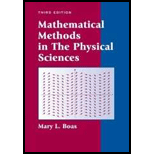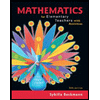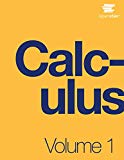
Mathematical Methods in the Physical Sciences
3rd Edition
ISBN: 9780471198260
Author: Mary L. Boas
Publisher: Wiley, John & Sons, Incorporated
expand_more
expand_more
format_list_bulleted
Concept explainers
Textbook Question
Chapter 8.5, Problem 10P
Solve the following differential equations by the methods discussed above and compare computer solutions.
Expert Solution & Answer
Want to see the full answer?
Check out a sample textbook solution
Chapter 8 Solutions
Mathematical Methods in the Physical Sciences
Ch. 8.1 - Verify the statement of Example 2. Also verify...Ch. 8.1 - Solve Example 4 using the general solution...Ch. 8.1 - Verify that y=sinx,y=cosx,y=eix, and y=eix are all...Ch. 8.1 - Find the distance which an object moves in time t...Ch. 8.1 - Find the position x of a particle at time t if its...Ch. 8.1 - A substance evaporates at a rate proportional to...Ch. 8.1 - The momentum p of an electron at speed v near the...Ch. 8.2 - For each of the following differential equations,...Ch. 8.2 - For each of the following differential equations,...Ch. 8.2 - For each of the following differential equations,...
Ch. 8.2 - For each of the following differential equations,...Ch. 8.2 - For each of the following differential equations,...Ch. 8.2 - For each of the following differential equations,...Ch. 8.2 - For each of the following differential equations,...Ch. 8.2 - For each of the following differential equations,...Ch. 8.2 - For each of the following differential equations,...Ch. 8.2 - For each of the following differential equations,...Ch. 8.2 - For each of the following differential equations,...Ch. 8.2 - For each of the following differential equations,...Ch. 8.2 - In Problems 13 to 15, find a solution (or...Ch. 8.2 - In Problems 13 to 15, find a solution (or...Ch. 8.2 - In Problems 13 to 15, find a solution (or...Ch. 8.2 - By separation of variables, find a solution of the...Ch. 8.2 - The speed of a particle on the x axis, x0, is...Ch. 8.2 - Let the rate of growth dN/dt of a colony of...Ch. 8.2 - (a) Consider a light beam traveling downward into...Ch. 8.2 - Consider the following special cases of the simple...Ch. 8.2 - Suppose the rate at which bacteria in a culture...Ch. 8.2 - Solve the equation for the rate of growth of...Ch. 8.2 - Heat is escaping at a constant rate [dQ/dtin(1.1)...Ch. 8.2 - Do Problem 23 for a spherical cavity containing a...Ch. 8.2 - Show that the thickness of the ice on a lake...Ch. 8.2 - An object of mass m falls from rest under gravity...Ch. 8.2 - According to Newtons law of cooling, the rate at...Ch. 8.2 - A glass of milk at 38 is removed from the...Ch. 8.2 - A solution containing 90 by volume of alcohol (in...Ch. 8.2 - If P dollars are left in the bank at interest I...Ch. 8.2 - Find the orthogonal trajectories of each of the...Ch. 8.2 - Find the orthogonal trajectories of each of the...Ch. 8.2 - Find the orthogonal trajectories of each of the...Ch. 8.2 - Find the orthogonal trajectories of each of the...Ch. 8.2 - Find the orthogonal trajectories of each of the...Ch. 8.3 - Using (3.9), find the general solution of each of...Ch. 8.3 - Using (3.9), find the general solution of each of...Ch. 8.3 - Using (3.9), find the general solution of each of...Ch. 8.3 - Using (3.9), find the general solution of each of...Ch. 8.3 - Using (3.9), find the general solution of each of...Ch. 8.3 - Using (3.9), find the general solution of each of...Ch. 8.3 - Using (3.9), find the general solution of each of...Ch. 8.3 - Using (3.9), find the general solution of each of...Ch. 8.3 - Using (3.9), find the general solution of each of...Ch. 8.3 - Using (3.9), find the general solution of each of...Ch. 8.3 - Using (3.9), find the general solution of each of...Ch. 8.3 - Using (3.9), find the general solution of each of...Ch. 8.3 - Using (3.9), find the general solution of each of...Ch. 8.3 - Using (3.9), find the general solution of each of...Ch. 8.3 - Water with a small salt content (5 lb in 1000 gal)...Ch. 8.3 - Find the general solution of (1.2) for an RL...Ch. 8.3 - Find the general solution of (1.3) for an RC...Ch. 8.3 - Prob. 18PCh. 8.3 - If 1=2= in (3.10), then e21tdt=dt. Find N2 for...Ch. 8.3 - Extend the radioactive decay problem (Example 2)...Ch. 8.3 - Generalize Problem 20 to any number of stages.Ch. 8.3 - Find the orthogonal trajectories of the family of...Ch. 8.3 - Find the orthogonal trajectories of the family of...Ch. 8.4 - Use the methods of this section to solve the...Ch. 8.4 - Use the methods of this section to solve the...Ch. 8.4 - Use the methods of this section to solve the...Ch. 8.4 - Use the methods of this section to solve the...Ch. 8.4 - Use the methods of this section to solve the...Ch. 8.4 - Use the methods of this section to solve the...Ch. 8.4 - Use the methods of this section to solve the...Ch. 8.4 - Use the methods of this section to solve the...Ch. 8.4 - Use the methods of this section to solve the...Ch. 8.4 - Use the methods of this section to solve the...Ch. 8.4 - Use the methods of this section to solve the...Ch. 8.4 - Use the methods of this section to solve the...Ch. 8.4 - Use the methods of this section to solve the...Ch. 8.4 - Use the methods of this section to solve the...Ch. 8.4 - Use the methods of this section to solve the...Ch. 8.4 - Solve the differential equation yy2+2xyy=0 by...Ch. 8.4 - If an incompressible fluid flows in a corner...Ch. 8.4 - Find the family of orthogonal trajectories of the...Ch. 8.4 - Find the family of curves satisfying the...Ch. 8.4 - Find the shape of a mirror which has the property...Ch. 8.4 - As in text just before (4.11), show that (a)...Ch. 8.4 - Show that the change of variables (4.13) in (4.11)...Ch. 8.4 - Show that (xP+yQ)1 is an integrating factor for...Ch. 8.4 - Solve Problems 9 and 10 by using an integrating...Ch. 8.4 - An equation of the form y=f(x)y2+g(x)y+h(x) is...Ch. 8.4 - Show that the substitution given in Problem 25...Ch. 8.5 - Solve the following differential equations by the...Ch. 8.5 - Solve the following differential equations by the...Ch. 8.5 - Solve the following differential equations by the...Ch. 8.5 - Solve the following differential equations by the...Ch. 8.5 - Solve the following differential equations by the...Ch. 8.5 - Solve the following differential equations by the...Ch. 8.5 - Solve the following differential equations by the...Ch. 8.5 - Solve the following differential equations by the...Ch. 8.5 - Solve the following differential equations by the...Ch. 8.5 - Solve the following differential equations by the...Ch. 8.5 - Solve the following differential equations by the...Ch. 8.5 - Solve the following differential equations by the...Ch. 8.5 - Recall from Chapter 3, equation ( 8.5), that a set...Ch. 8.5 - Recall from Chapter 3, equation ( 8.5), that a set...Ch. 8.5 - Recall from Chapter 3, equation ( 8.5), that a set...Ch. 8.5 - Recall from Chapter 3, equation (8.5), that a set...Ch. 8.5 - Recall from Chapter 3, equation ( 8.5), that a set...Ch. 8.5 - Recall from Chapter 3, equation (8.5), that a set...Ch. 8.5 - Solve the algebraic equation D2+(1+2i)D+i1=0 (note...Ch. 8.5 - As in Problem 19, solve y+(1i)yiy=0. Hint: See...Ch. 8.5 - By the method used in solving (5.4) to get (5.9),...Ch. 8.5 - Use the results of Problem 21 to find the general...Ch. 8.5 - Use the results of Problem 21 to find the general...Ch. 8.5 - Use the results of Problem 21 to find the general...Ch. 8.5 - Use the results of Problem 21 to find the general...Ch. 8.5 - Use the results of Problem 21 to find the general...Ch. 8.5 - Use the results of Problem 21 to find the general...Ch. 8.5 - Use the results of Problem 21 to find the general...Ch. 8.5 - Use the results of Problem 21 to find the general...Ch. 8.5 - Use the results of Problem 21 to find the general...Ch. 8.5 - Let D stand for d/dx, that is, Dy=dy/dx; then...Ch. 8.5 - In Example 3, we used the second solution in...Ch. 8.5 - A particle moves along the x axis subject to a...Ch. 8.5 - Find the equation of motion of a simple pendulum...Ch. 8.5 - The gravitational force on a particle of mass m...Ch. 8.5 - Find (in terms of L and C) the frequency of...Ch. 8.5 - A block of wood is floating in water; it is...Ch. 8.5 - Solve the RLC circuit equation [(5.33)or(5.34)]...Ch. 8.5 - (a) Find numerical values of the constants and...Ch. 8.5 - The natural period of an undamped system is 3 sec,...Ch. 8.6 - Find the general solution of the following...Ch. 8.6 - Find the general solution of the following...Ch. 8.6 - Find the general solution of the following...Ch. 8.6 - Find the general solution of the following...Ch. 8.6 - Find the general solution of the following...Ch. 8.6 - Find the general solution of the following...Ch. 8.6 - Find the general solution of the following...Ch. 8.6 - Find the general solution of the following...Ch. 8.6 - Find the general solution of the following...Ch. 8.6 - Find the general solution of the following...Ch. 8.6 - Find the general solution of the following...Ch. 8.6 - Find the general solution of the following...Ch. 8.6 - Find the general solution of the following...Ch. 8.6 - Find the general solution of the following...Ch. 8.6 - Find the general solution of the following...Ch. 8.6 - Find the general solution of the following...Ch. 8.6 - Find the general solution of the following...Ch. 8.6 - Find the general solution of the following...Ch. 8.6 - Find the general solution of the following...Ch. 8.6 - Find the general solution of the following...Ch. 8.6 - Find the general solution of the following...Ch. 8.6 - Find the general solution of the following...Ch. 8.6 - Find the general solution of the following...Ch. 8.6 - Find the general solution of the following...Ch. 8.6 - Find the general solution of the following...Ch. 8.6 - Find the general solution of the following...Ch. 8.6 - Verify that (6.4) is a particular solution of...Ch. 8.6 - Solve (6.16) by the method used in solving (...Ch. 8.6 - Consider the differential equation...Ch. 8.6 - (a) Show that (Da)ecx=(ca)ecx;...Ch. 8.6 - (a) Show that Deaxy=eax(D+a)y, D2eaxy=eax(D+a)2y,...Ch. 8.6 - Using Problems 29 and 31b, show that equation...Ch. 8.6 - In Problem 33 to 38, solve the given differential...Ch. 8.6 - In Problem 33 to 38, solve the given differential...Ch. 8.6 - In Problem 33 to 38, solve the given differential...Ch. 8.6 - In Problem 33 to 38, solve the given differential...Ch. 8.6 - In Problem 33 to 38, solve the given differential...Ch. 8.6 - In Problem 33 to 38, solve the given differential...Ch. 8.6 - Find the solutions of (1.2) (put I=dq/dt ) and...Ch. 8.6 - In (6.38), show that for a given forcing frequency...Ch. 8.6 - Solve Problems 41 and 42 by use of Fourier series....Ch. 8.6 - Solve Problems 41 and 42 by use of Fourier series....Ch. 8.6 - Consider an equation for damped forced vibrations...Ch. 8.7 - Solve the following differential equations by...Ch. 8.7 - Solve the following differential equations by...Ch. 8.7 - Solve the following differential equations by...Ch. 8.7 - Solve the following differential equations by...Ch. 8.7 - The differential equation of a hanging chain...Ch. 8.7 - The curvature of a curve in the (x,y) plane is...Ch. 8.7 - Solve y+2y=0 by method (c) above and compare with...Ch. 8.7 - The force of gravitational attraction on a mass m...Ch. 8.7 - Show that (7.15) is a separable equation. [You may...Ch. 8.7 - In Problems 10 and 11, solve (7.14) to find v(x)...Ch. 8.7 - In Problems 10 and 11, solve (7.14) to find v(x)...Ch. 8.7 - In Problem 11, find v(x) if v=0,x=1, at t=0. Then...Ch. 8.7 - The exact equation of motion of a simple pendulum...Ch. 8.7 - Verify (7.19) and (7.20). Hint:...Ch. 8.7 - If you solve (7.17) when f(x)=0 by assuming a...Ch. 8.7 - Solve the following equations either by method (d)...Ch. 8.7 - Solve the following equations using method (d)...Ch. 8.7 - Solve the following equations using method (d)...Ch. 8.7 - Solve the following equations using method (d)...Ch. 8.7 - Solve the following equations using method (d)...Ch. 8.7 - Solve the following equations using method (d)...Ch. 8.7 - Solve the following equations using method (d)...Ch. 8.7 - Solve the two differential equations in Problem...Ch. 8.7 - Substitute (7.22) into (7.21) to obtain the...Ch. 8.7 - For the following problems, verify the given...Ch. 8.7 - For the following problems, verify the given...Ch. 8.7 - For the following problems, verify the given...Ch. 8.7 - For the following problems, verify the given...Ch. 8.7 - For the following problems, verify the given...Ch. 8.7 - For the following problems, verify the given...Ch. 8.8 - For integral k, verify L5 and L6 in the Laplace...Ch. 8.8 - By using L2, verify L7 and L8 in the Laplace...Ch. 8.8 - Using either L2, or L3 and L4, verify L9 and L10.Ch. 8.8 - By differentiating the appropriate formula with...Ch. 8.8 - By integrating the appropriate formula with...Ch. 8.8 - By replacing a in L2 by a+ib and then by aib, and...Ch. 8.8 - Verify L15 to L18, by combining appropriate...Ch. 8.8 - Find the inverse transforms of the functions F(p)...Ch. 8.8 - Find the inverse transforms of the functions F(p)...Ch. 8.8 - Find the inverse transforms of the functions F(p)...Ch. 8.8 - Find the inverse transforms of the functions F(p)...Ch. 8.8 - Find the inverse transforms of the functions F(p)...Ch. 8.8 - Find the inverse transforms of the functions F(p)...Ch. 8.8 - Show that a combination of entries L3 to L10, L13,...Ch. 8.8 - Prove L32 for n=1. Hint: Differentiate equation...Ch. 8.8 - Use L32 and L3 to obtain L11.Ch. 8.8 - Use L32 and L11 to obtain Lt2sinat.Ch. 8.8 - Use L31 to derive L21Ch. 8.8 - Table entries L28 and L29 are known as translation...Ch. 8.8 - Table entries L28 and L29 are known as translation...Ch. 8.8 - Table entries L28 and L29 are known as translation...Ch. 8.8 - Table entries L28 and L29 are known as translation...Ch. 8.8 - Table entries L28 and L29 are known as translation...Ch. 8.8 - Table entries L28 and L29 are known as translation...Ch. 8.8 - Table entries L28 and L29 are known as translation...Ch. 8.8 - Table entries L28 and L29 are known as translation...Ch. 8.8 - Table entries L28 and L29 are known as translation...Ch. 8.9 - Continuing the method used in deriving (9.1) and...Ch. 8.9 - By using Laplace transforms, solve the following...Ch. 8.9 - By using Laplace transforms, solve the following...Ch. 8.9 - By using Laplace transforms, solve the following...Ch. 8.9 - By using Laplace transforms, solve the following...Ch. 8.9 - By using Laplace transforms, solve the following...Ch. 8.9 - By using Laplace transforms, solve the following...Ch. 8.9 - By using Laplace transforms, solve the following...Ch. 8.9 - By using Laplace transforms, solve the following...Ch. 8.9 - By using Laplace transforms, solve the following...Ch. 8.9 - By using Laplace transforms, solve the following...Ch. 8.9 - By using Laplace transforms, solve the following...Ch. 8.9 - By using Laplace transforms, solve the following...Ch. 8.9 - By using Laplace transforms, solve the following...Ch. 8.9 - By using Laplace transforms, solve the following...Ch. 8.9 - By using Laplace transforms, solve the following...Ch. 8.9 - By using Laplace transforms, solve the following...Ch. 8.9 - By using Laplace transforms, solve the following...Ch. 8.9 - By using Laplace transforms, solve the following...Ch. 8.9 - By using Laplace transforms, solve the following...Ch. 8.9 - By using Laplace transforms, solve the following...Ch. 8.9 - By using Laplace transforms, solve the following...Ch. 8.9 - By using Laplace transforms, solve the following...Ch. 8.9 - By using Laplace transforms, solve the following...Ch. 8.9 - By using Laplace transforms, solve the following...Ch. 8.9 - By using Laplace transforms, solve the following...Ch. 8.9 - Solve the following sets of equations by the...Ch. 8.9 - Solve the following sets of equations by the...Ch. 8.9 - Solve the following sets of equations by the...Ch. 8.9 - Solve the following sets of equations by the...Ch. 8.9 - Solve the following sets of equations by the...Ch. 8.9 - Solve the following sets of equations by the...Ch. 8.9 - Solve the following sets of equations by the...Ch. 8.9 - Evaluate each of the following definite integrals...Ch. 8.9 - Evaluate each of the following definite integrals...Ch. 8.9 - Evaluate each of the following definite integrals...Ch. 8.9 - Evaluate each of the following definite integrals...Ch. 8.9 - Evaluate each of the following definite integrals...Ch. 8.9 - Evaluate each of the following definite integrals...Ch. 8.9 - Evaluate each of the following definite integrals...Ch. 8.9 - Evaluate each of the following definite integrals...Ch. 8.9 - Evaluate each of the following definite integrals...Ch. 8.10 - Show that g*h=h*g as claimed in I34. Hint: Let u=t...Ch. 8.10 - Use L34 and L2 to find the inverse transform of...Ch. 8.10 - Use the convolution integral to find the inverse...Ch. 8.10 - Use the convolution integral to find the inverse...Ch. 8.10 - Use the convolution integral to find the inverse...Ch. 8.10 - Use the convolution integral to find the inverse...Ch. 8.10 - Use the convolution integral to find the inverse...Ch. 8.10 - Use the convolution integral to find the inverse...Ch. 8.10 - Use the convolution integral to find the inverse...Ch. 8.10 - Use the convolution integral to find the inverse...Ch. 8.10 - Use the convolution integral to find the inverse...Ch. 8.10 - Use the convolution integral to find the inverse...Ch. 8.10 - Use the Laplace transform table to find...Ch. 8.10 - Use the convolution integral (see Example 2) to...Ch. 8.10 - Use the convolution integral (see Example 2) to...Ch. 8.10 - Consider solving an equation like (10.1) but with...Ch. 8.10 - Solve the differential equation ya2y=f(t), where...Ch. 8.10 - A mechanical or electrical system is described by...Ch. 8.10 - Following the method of equations (10.8) to...Ch. 8.11 - Find the inverse Laplace transform of e2p/p2 in...Ch. 8.11 - Verify L24 in the table by using L1, L27, and the...Ch. 8.11 - Verify L28 in the table by using L27 and the...Ch. 8.11 - Show that fn(t)dt=1 for the functions fn(t) in...Ch. 8.11 - Solve the differential equation y+2y=f(t),y0=y0=0,...Ch. 8.11 - (a) Let a mechanical or electrical system be...Ch. 8.11 - Using the function method, find the response (see...Ch. 8.11 - Using the function method, find the response (see...Ch. 8.11 - Using the function method, find the response (see...Ch. 8.11 - Using the function method, find the response (see...Ch. 8.11 - Using the function method, find the response (see...Ch. 8.11 - Evaluate the functions fn(xa) defined by the...Ch. 8.11 - Using functions, write the following mass or...Ch. 8.11 - Integrate by parts as we did for (11.14) to obtain...Ch. 8.11 - Use (11.6) and (11.14) to (11.16) to evaluate the...Ch. 8.11 - Verify the operator equation ddxsgnx=2(x) where...Ch. 8.11 - Verify (11.18a) and (11.18c) by multiplying by a...Ch. 8.11 - Use equation (11.16) to generalize the operator...Ch. 8.11 - (a) Show that you can differentiate a generalized...Ch. 8.11 - Verify the operator equations in (11.19) not done...Ch. 8.11 - Make use of the operator equations (11.19) and...Ch. 8.11 - You may find the spherical coordinate function...Ch. 8.11 - Write a formula in rectangular coordinates, in...Ch. 8.11 - Prob. 24PCh. 8.11 - Let F(x)=x2,x0,0,x0. Show that F(x)=0 for all x0,...Ch. 8.12 - Solve (12.3) if G=0 and dG/dt=0 at t=0 to obtain...Ch. 8.12 - In Problems 2 and 3, use (12.6) to solve (12.1)...Ch. 8.12 - In Problems 2 and 3, use (12.6) to solve (12.1)...Ch. 8.12 - Use equation (12.6) to solve Problem 10.18.Ch. 8.12 - Obtain ( 12.6 ) by using the convolution integral...Ch. 8.12 - For Problem 10.17, show (as in Problem 1) that the...Ch. 8.12 - Use the Green function of Problem 6 to solve...Ch. 8.12 - Solve the differential equation...Ch. 8.12 - Following the proof of (12.4), show that (12.9)...Ch. 8.12 - Solve (12.12) and (12.14) to get (12.15). Hint:...Ch. 8.12 - In Problems 11 to 13, use (12.17) to find the...Ch. 8.12 - In Problems 11 to 13, use (12.17) to find the...Ch. 8.12 - In Problems 11 to 13, use (12.17) to find the...Ch. 8.12 - (a) Given that y1(x) and y2(x) are solutions of...Ch. 8.12 - In Problems 15 to 18, use the given solutions of...Ch. 8.12 - In Problems 15 to 18, use the given solutions of...Ch. 8.12 - In Problems 15 to 18, use the given solutions of...Ch. 8.12 - In Problems 15 to 18, use the given solutions of...Ch. 8.13 - Identify each of the differential equations in...Ch. 8.13 - Identify each of the differential equations in...Ch. 8.13 - Identify each of the differential equations in...Ch. 8.13 - Identify each of the differential equations in...Ch. 8.13 - Identify each of the differential equations in...Ch. 8.13 - Identify each of the differential equations in...Ch. 8.13 - Identify each of the differential equations in...Ch. 8.13 - Identify each of the differential equations in...Ch. 8.13 - Identify each of the differential equations in...Ch. 8.13 - Identify each of the differential equations in...Ch. 8.13 - Identify each of the differential equations in...Ch. 8.13 - Identify each of the differential equations in...Ch. 8.13 - Identify each of the differential equations in...Ch. 8.13 - Identify each of the differential equations in...Ch. 8.13 - Identify each of the differential equations in...Ch. 8.13 - Identify each of the differential equations in...Ch. 8.13 - Identify each of the differential equations in...Ch. 8.13 - Identify each of the differential equations in...Ch. 8.13 - Identify each of the differential equations in...Ch. 8.13 - Identify each of the differential equations in...Ch. 8.13 - Identify each of the differential equations in...Ch. 8.13 - Identify each of the differential equations in...Ch. 8.13 - Identify each of the differential equations in...Ch. 8.13 - Identify each of the differential equations in...Ch. 8.13 - In Problems 25 to 28, find a particular solution...Ch. 8.13 - In Problems 25 to 28, find a particular solution...Ch. 8.13 - In Problems 25 to 28, find a particular solution...Ch. 8.13 - In Problems 25 to 28, find a particular solution...Ch. 8.13 - If 10kg of rock salt is placed in water, it...Ch. 8.13 - A mass m falls under gravity (force mg ) through a...Ch. 8.13 - The acceleration of an electron in the electric...Ch. 8.13 - Suppose that the rate at which you work on a hot...Ch. 8.13 - Compare the temperatures of your cup of coffee at...Ch. 8.13 - A flexible chain of length l is hung over a peg...Ch. 8.13 - A raindrop falls through a cloud, increasing in...Ch. 8.13 - (a) A rocket of (variable) mass m is propelled by...Ch. 8.13 - The differential equation for the path of a planet...Ch. 8.13 - Use L15 and L31 to find the Laplace transform of...Ch. 8.13 - Use L32 and L9 to find the Laplace transform of t...Ch. 8.13 - Use the Laplace transform table to evaluate:...Ch. 8.13 - Use the Laplace transform table to evaluate:...Ch. 8.13 - Find the inverse Laplace transform of: p(p+a)3Ch. 8.13 - Find the inverse Laplace transform of: p2p2+a22Ch. 8.13 - Find the inverse Laplace transform of: 1p2+a23Ch. 8.13 - Prove the following shifting or translation...Ch. 8.13 - Use the table of Laplace transforms to find the...Ch. 8.13 - Solve Problems 47 and 48 either by Laplace...Ch. 8.13 - Solve Problems 47 and 48 either by Laplace...
Additional Math Textbook Solutions
Find more solutions based on key concepts
Convert each of the following percents to decimals: 78%
Mathematics All Around (6th Edition)
Mathematical Connections Explain why a number and a numeral are considered different.
A Problem Solving Approach to Mathematics for Elementary School Teachers (12th Edition)
Ted thinks that because 10.10=100and2.5=10, he should be able to calculate 12. 15 by adding 100 + 10 to get 110...
Mathematics for Elementary Teachers with Activities (5th Edition)
The amount John would have to deposit each year in order to have the same amount as Bob has at retirement.
Finite Mathematics for Business, Economics, Life Sciences and Social Sciences
In an RC circuit, the voltage across the capacitor VC lags the voltage across the resistor by -90 as shown in F...
Introductory Mathematics for Engineering Applications
Checkpoint1
Use the substitution method to solve this system:
Answers to Checkpoint exercises are found at the...
Mathematics with Applications In the Management, Natural, and Social Sciences (12th Edition)
Knowledge Booster
Learn more about
Need a deep-dive on the concept behind this application? Look no further. Learn more about this topic, subject and related others by exploring similar questions and additional content below.Recommended textbooks for you
 Discrete Mathematics and Its Applications ( 8th I...MathISBN:9781259676512Author:Kenneth H RosenPublisher:McGraw-Hill Education
Discrete Mathematics and Its Applications ( 8th I...MathISBN:9781259676512Author:Kenneth H RosenPublisher:McGraw-Hill Education Mathematics for Elementary Teachers with Activiti...MathISBN:9780134392790Author:Beckmann, SybillaPublisher:PEARSON
Mathematics for Elementary Teachers with Activiti...MathISBN:9780134392790Author:Beckmann, SybillaPublisher:PEARSON
 Thinking Mathematically (7th Edition)MathISBN:9780134683713Author:Robert F. BlitzerPublisher:PEARSON
Thinking Mathematically (7th Edition)MathISBN:9780134683713Author:Robert F. BlitzerPublisher:PEARSON Discrete Mathematics With ApplicationsMathISBN:9781337694193Author:EPP, Susanna S.Publisher:Cengage Learning,
Discrete Mathematics With ApplicationsMathISBN:9781337694193Author:EPP, Susanna S.Publisher:Cengage Learning, Pathways To Math Literacy (looseleaf)MathISBN:9781259985607Author:David Sobecki Professor, Brian A. MercerPublisher:McGraw-Hill Education
Pathways To Math Literacy (looseleaf)MathISBN:9781259985607Author:David Sobecki Professor, Brian A. MercerPublisher:McGraw-Hill Education

Discrete Mathematics and Its Applications ( 8th I...
Math
ISBN:9781259676512
Author:Kenneth H Rosen
Publisher:McGraw-Hill Education

Mathematics for Elementary Teachers with Activiti...
Math
ISBN:9780134392790
Author:Beckmann, Sybilla
Publisher:PEARSON


Thinking Mathematically (7th Edition)
Math
ISBN:9780134683713
Author:Robert F. Blitzer
Publisher:PEARSON

Discrete Mathematics With Applications
Math
ISBN:9781337694193
Author:EPP, Susanna S.
Publisher:Cengage Learning,

Pathways To Math Literacy (looseleaf)
Math
ISBN:9781259985607
Author:David Sobecki Professor, Brian A. Mercer
Publisher:McGraw-Hill Education
01 - What Is A Differential Equation in Calculus? Learn to Solve Ordinary Differential Equations.; Author: Math and Science;https://www.youtube.com/watch?v=K80YEHQpx9g;License: Standard YouTube License, CC-BY
Higher Order Differential Equation with constant coefficient (GATE) (Part 1) l GATE 2018; Author: GATE Lectures by Dishank;https://www.youtube.com/watch?v=ODxP7BbqAjA;License: Standard YouTube License, CC-BY
Solution of Differential Equations and Initial Value Problems; Author: Jefril Amboy;https://www.youtube.com/watch?v=Q68sk7XS-dc;License: Standard YouTube License, CC-BY